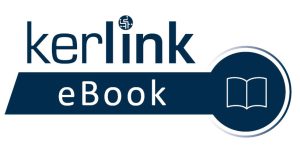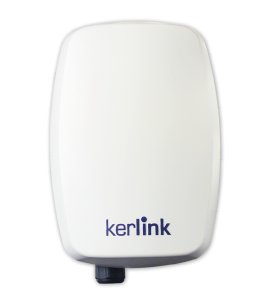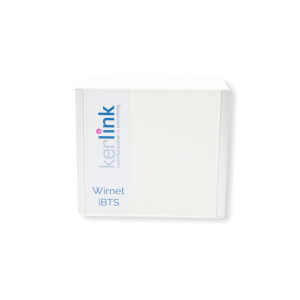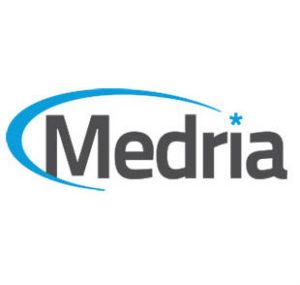Agriculture
Kerlink IoT Solutions in Action for Intelligent Agriculture
Precision Agriculture
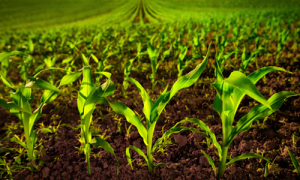
Soil Health Analysis and Monitoring
Farmers and growers depend on soil and climatic conditions to ensure their production and revenues. The more they can secure growing conditions, the more they can anticipate crop yields and, thus, their income. In addition, getting updated and accurate information on soil conditions help them make the right decision on optimal planting, appropriate use of fertilizer, adapted actions for damaged plants and tailored water usage to avoid plants stress. Crops visual inspection, instruments manual reading or planned operations were the widespread rules until recently but climate change, water scarcity and increasing demand for food require new practices.
IoT sensors and devices, connected to a tailored private IoT network, can easily monitor, collect and transmit in real-time soil key data like temperature, moisture, pH level, water tension, salinity and NPK ratios (nitrogen, phosphate and potassium). Combined with other sensors that monitor local weather conditions (air temperature, rain, wind, air pressure, humidity, sun exposure), smart IoT applications can deliver actionable data and help to define the appropriate tasks to perform.
Leveraging Kerlink industrial-grade IoT connectivity, powered by LoRaWAN technology, for smart soil monitoring solutions helps to improve crops yields, automate operations for better productivity, monitor plants growth patterns and evolution over time to optimize long term soil and water management and size the use of fertilizer to cut costs and reduce farming environmental footprint.
Irrigation Monitoring and Water Management
Poor irrigation management can irremediably harm crop quality and growth, thus increasing potential decrease of yields and loss of revenues for growers and farmers. In addition, the increasing challenges around water management and climate change require more efficient and adapted solutions to detect water levels, measure soil moisture and manage appropriate irrigation in real-time to minimize water losses, reduce planned manual operations and adapt to local climatic conditions, existing irrigation technologies, crop type, soil specificities and geography (to name a few).
IoT sensors and devices, connected to a tailored private IoT network, can easily be installed to instantly measure soil moisture at various depth, remotely turn on / off irrigation pumps, monitor the water flow, open / close irrigation valves and automatically dispense the requested volume of water, thanks to a combined analysis of ambient weather and soil parameters, instead of manual operations as usually done.
Leveraging Kerlink industrial-grade IoT connectivity, powered by LoRaWAN technology, for smart irrigation solutions helps to optimize plants growth, increase crop yields, reduce manual operations and reduce water consumption (between 20% to 50% based on experience)
Weather and Environment Monitoring
Weather can be an ally or an adversary of the farmers. Good weather conditions can help increase crops yields and ensure a good harvesting or vintaging. On the contrary, bad weather conditions and lack of anticipation can damage plants thus jeopardizing yields and revenues. Getting accurate information on changing weather conditions and deteriorating water quality can really make the difference. And farmers often rely on inaccurate meteorological report or changing weather conditions because of climate change. The same way, manually checking rain gauges and visually monitoring water level in rivers, canals and irrigation ditch is time consuming and limits reactivity.
IoT sensors and devices, connected to a tailored private IoT network, can easily record local environmental factors like rainfall, temperature, humidity, air pressure, wind and sun exposure, to map accurate meteorological conditions of the entire farm. They can also monitor the level of water and its quality to anticipate and detect flood or drought, based on defined thresholds, to record rainfall and monitor its impact, or to decide on irrigation needs.
Leveraging Kerlink industrial-grade IoT connectivity, powered by LoRaWAN technology, for smart farming environment monitoring helps to monitor critical environmental indicators in real-time to reduce manual operations, adapt water usage and water quality and detect potential issues and risks to decide on anticipated actions or corrective measures.
Smart Farming
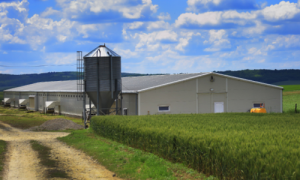
Pest Control
Insects and Rodents have always been a nuisance for farmers. They feed on the crops and infest fields, potentially spreading various diseases. Detecting, controlling and maintaining their population is therefore key for farmers and growers to ensure crop health, quality and yield. If pesticides and insecticides play a key role in preventing infestations, they raise increasing environmental challenges and health issues. Inappropriate or over use of pesticides can result in severe water and soil contamination and intoxicate plants with harmful chemicals. Besides, because of continuous exposure, rodent and insects can become resistant against the products used to fight them and consequently generate a heavier use of these treatments, thus worsening the consequences.
IoT sensors and devices can help monitor the growth of pests on the field to take further appropriate actions. Farmers can automatically and remotely detect the presence of insects, rodents and various pathogens in their fields, identify and quickly spot the exact locations infected and monitor their breed and population to take appropriate and tailored actions. Combined with weather monitoring, seasonal variations and pests breeding patterns, farmers can predict the attack and assess the threat level of pest outbreaks and swarm attacks.
Leveraging Kerlink IoT solutions to set-up a tailored private IoT network for pest control can help to automate time-consuming operations such as visual inspection, random visits and manual data point measurement and inspection, making the process more accurate and cost effective and the responses more adapted. Using Kerlink industrial-grade IoT connectivity powered by LoRaWAN technology for such connected and integrated pest management improves ecological, social and economic consequences of pest control by targeting and limiting the spray of pesticides, minimizing the chances of crop intoxication and environmental contamination and improving information for future treatment.
Farming Equipment Monitoring & Tracking
Agriculture, as an industry, is heavily dependent on machinery and equipment. Securing assets, protecting them from theft, ensuring appropriate maintenance operations and eliminating downtime are key to ensure day-to-day operations and achieve targeted productivity. One piece of equipment that accidentally goes out of order and this usually leads to unexpected delays, potential yield decrease and revenue loss. These various agricultural assets need surveillance, monitoring and alerting in case something goes wrong. They now can be monitored to understand their operational status and anticipated predictive maintenance, be tracked to protect them from theft or vandalism and be located in case something goes wrong.
IoT Sensors and devices, connected to a tailored private IoT network, can help to deploy remote monitoring solutions to manage critical farm machinery and assets in real-time. Equipment – but also farms gates, fences, gates, remote farmhouses or outbuildings – can be permanently protected with IoT sensors, trackers and devices. End-to-end automated data processing thus deliver the right information at the right time: instant collection in the field, real-time sending to central management capabilities and actionable alerting send to the farmers to take appropriate actions.
Leveraging Kerlink IoT solutions for farming equipment monitoring & tracking can help continuously monitor assets’ usage and status to anticipate maintenance, to ensure continuous protection or to set-up geofencing and movement alerts. Using Kerlink industrial-grade IoT connectivity and network-based geolocation, powered by LoRaWAN technology, helps to lower the cost of maintenance, increase resource utilization, reduce machinery downtime, cute operational costs and increase yield.
Silos, Tanks and Storage Assets Monitoring
Intermediate Bulk Containers (IBCs), tanks, silos, hoppers or feed bins are also essential parts of the farms or agricultural cooperatives equipment. Not only because they store critical resources like water for irrigation, gas for machinery or grain for cattle, but also because they are used to stock the produce of the harvest before they are shipped for processing. In this domain too, visual inspection of levels and quality of stocks presents a number of risks and challenges. First, this can be enormously time-consuming and costly to visit all these storage spaces. Second, visual inspection is often inaccurate. And a lack of accurate and up-to-date information can have serious consequences when it is used for decision making regarding stock replenishment, potentially resulting in insufficient space for an incoming delivery or inability to meet a customer order. The right timing of stock replenishment can make a real difference: replenishing too early – before the previous material has been used up – can make it challenging to store new deliveries; unanticipated stock depletion can require very expensive emergency deliveries and put livestock wellbeing and farm production capabilities at risk; ineffective use of full storage capabilities can increase equipment downtime. Third, climbing up to the top of tall silos, hoppers and bins to perform level visual inspection presents a real risk of fall and injury to farmers and breeders. Reducing the need for visual inspections can bring a much-needed improvement to farm workers.
IoT sensors and devices, connected to a tailored private IoT network, can help to remotely monitor levels in tanks, silos and other storage assets in real-time and to send information back to a central dashboard. IoT sensors can also help to monitor temperature, humidity, pressure and mechanical parts of the storage equipment to raise alerts in case an anomaly is detected. The owner can immediately receive an alert when defined thresholds are exceeded, for example a high temperature or an excessive pressure. Levels permanent monitoring also helps to keep stock statements accurate and optimized and help to place replenishment orders when relevant.
Leveraging Kerlink IoT solutions to connect silos, tanks and storage assets helps to simplify storage levels monitoring, to automate replenishment, and to secure operations for farmers and growers, making the process smoother and effective. Using Kerlink industrial-grade IoT connectivity powered by LoRaWAN technology can help farmers remotely and instantly control their storage facilities in multiple locations and save precious time in taking of their land or their livestock.
Food Processing and Safety
Today’s consumers request increasing value on fresh and high-quality food. The same way, regulators are putting an increasing pressure on farmers and food processors with stringent sanitary regulations and accurate traceability. Food processing industry players – production, storage, processing stages, transportation and distribution – need to improve the way they are getting agriculture products form farm to table. Traceability information is also increasingly required, especially to monitor the food processing and grant the continuity of the cold chain. As cold chain systems are susceptible to mechanical breakdowns of equipment, traffic delays for refrigerated trucks, theft or human error (among others), it is key for cargo to become intelligent to ensure the quality of food from producers to end users.
IoT sensors and devices, connected to a tailored private IoT network, can help to measure tilt, temperature, humidity and air pressure through every step of the processing and supply chain, thus ensuring that food products are always handled correctly and kept at the optimal quality requirements. Transparent traceability with IoT sensors, from initial farm production to end user distribution, enables food batches that might potentially be harmful to be quickly identified, tracked and localized for appropriate action.
Leveraging Kerlink IoT solutions can help to ensure food quality and safety throughout the processing chain to monitor key metrics, from the farm to the consumer. Kerlink industrial-grade IoT connectivity powered by LoRaWAN technology enables connected sensors to collect exact temperatures and raise timely alerts if they fall outside of a safe threshold, to track and monitor foods batches during the successive steps of processing and to transmit the requested data to react in real-time to changes, damages or delay.
Aquaculture
Food fish consumption rose by +122% from 1990 to 2018. For the same period of time, aquaculture production soared by +527%. World aquaculture production reached another all-time record high of 114.5 million tons in live weight in 2018, with a total farmgate sale value of USD 263.6 billion[1]. By 2030, aquaculture is expected to account for two-thirds of the fish that humans consume[2]. The FAO defines aquaculture as the “farming of aquatic animals, including finfish, crustaceans, mollusks, etc. and aquatic plants, mostly algae, using or within freshwater, sea water, brackish water and inland saline water”[3]. This increasing demand for fish has put a strain on resources and challenged sustainable practices among fisheries. The increase of product quality and expected yield also put pressure on human resources and the efficiency of operations, with see farms being located in remote places or on the open sea, thus increasing the travel costs. Key variables must be collected in real time to monitor fish growth and health, as well as environmental conditions: this process requires an increasing and innovative use of new technologies, among which IoT, to make the right and timely decisions.
IoT technologies have revolutionized fisheries organization and fish farming processes using IoT sensors and devices connected to IoT Networks. IoT technology can help in 3 ways:
First, it can help to collect real-time information on fish biomass – the weight and length of a fish – to monitor growth, adapt feeding levels accordingly and plan the most appropriate harvest timing. IoT helps to remotely monitor the levels of feed containers and anticipate the need for replenishment if containers levels are low. IoT is a key component of the increasing use of machine learning applied to create predictive models for a better production.
Second, the farm direct environment can be monitored more efficiently and more extensively enabling real-time corrective measures to be implemented. For example, IoT sensors can monitor water quality key parameters in land farms, like temperature, dissolved oxygen levels, pH, electrical conductivity, color, vital for the fish life cycle. Parasites, such as sea lice, and diseases can also be detected to protect farmed fish, as opposed to fish that live and breed in their natural environments. Opens sea farms can leverage IoT to monitor the conditions of the pens and of the nets to ensure that fish are properly protected. Moreover, IoT can help to secure fish farms with real-time access control, presence detection and alerts.
Third, the impacts of the farm on the surrounding environment can be tracked and followed more closely, allowing a better environmental management. Open sea farms concentrate numerous fishes on the same location and deliver high levels of feed, potentially modifying local ecosystems. In the same way, land-based farms fishes live in tanks containing dirty water that must be regularly changed. Depending on the system set-up, this operation can result in the discharge of significant amounts of wastewater containing feces, nutrients and chemicals potentially released into the environment. IoT sensors can help constantly measure these metrics and implement the appropriate water treatment installation.
Leveraging Kerlink IoT solutions can help to easily deploy a tailored private IoT network for fish farms to continuously collect the appropriate data to deliver actionable information. Kerlink industrial-grade IoT connectivity powered by LoRaWAN technology enables fish farmers to make confident decisions based on timely alerts and automated systems with clear benefits: no need to handle fish for better health and growth, more adapted feed dispensing with less waste, fewer diseases, reduced need of staff visits thus minimizing expenditure on travels and less impact on the surrounding ecosystem and environment with adapted water treatment.
[2] https://www.aquaculturealliance.org
Cattle Monitoring and Tracking
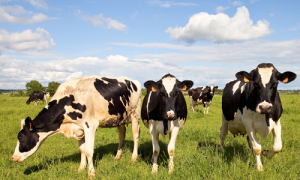
The world cattle inventory in 2020 was reported at 987.5 million head. As livestock is one of the most precious and valuable assets of stock breeders, its monitoring is a key day-to-day activity of a typical breeding farm. Handling cattle accidents, disease, infections, whelping, thefts and losses are resource and time-consuming tasks for cattle farmers. These complex operations require recurrent manual and visual inspection for livestock but also for the required equipment like feed container, water supply, fences, cowsheds or stalls, among others. New technologies can help automate these tasks and increase livestock growth, health and protection, thus increasing livestock breeders’ productivity and revenue.
Livestock Health and Mobility Monitoring
IoT sensors and devices can help livestock breeding in different ways. First, autonomous trackers placed on hear or collar can consistently collect body essential parameters like temperature, heartrate, head movement and general mobility. These vital parameters can quickly help identify event of an anomaly or concern – like temperature elevation or reduced mobility, an indicator of stress or potential sickness – and react upon quickly, granting quick identification and immediate separation of sick cattle from herds. Other IoT monitoring sensors can, for example, help predict cows’ optimal fertility times and anticipate birth of calves to reduce mortality rates, improve fertility ones, thus decreasing losses and increasing profitability.
Livestock Tracking and Monitoring
Second, IoT autonomous trackers can improve dynamic and instant livestock monitoring and location information. Growers can get valuable insight about livestock behaviors like mobility patterns in a designated area, grazing habits or adaptation to environmental changes. Geofencing can additionally help to check if cattle stay in a designated area over time. In case of specific events, like escapes resulting from damages to the pen, illness detection or suspicion of theft, IoT trackers can be used to locate cattle and instantly raise an alert when leaving a predefined area.
Livestock Feed Monitoring
Third, IoT sensors and devices can automate the monitoring of livestock’s feed container and water systems fill levels to ensure that the herd is appropriately fed, to plan the delivery of feed at the correct time and to anticipate which feed and water tanks need to be refilled, the requested volume and check their location. Collected data directly trigger animal feed re-ordering and improve stocking practices.
Leveraging Kerlink IoT solutions can help to improve cattle monitoring and tracking as breeders monitor their livestock more closely and acte faster in the event of abnormal situation. Kerlink industrial-grade IoT connectivity and value-added solutions, powered by LoRaWAN technology and GPS-free LoRa network-based geolocation, can help improve cattle health, wellness, security and feeding to protect farmers’ live assets, optimize pasture utilization and increase revenue.
Greenhouses Monitoring
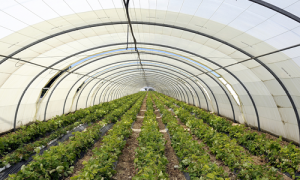
With a growing population living in urban areas, the decrease of land available for farming, evolving production challenges resulting from climate change and the continuous growth of consumer year-round demand for fresh vegetables and fruits – whatever the season –, opportunities for greenhouse farming are booming. The global commercial greenhouse market value is projected to jump from USD 29.6 billion in 2020 to USD 50.6 billion by 2025, at a CAGR of 11.3%[1]. Indoor agriculture becomes an essential practice for food and plant production as it enables multiple regions to grow types of fruit and vegetables that may usually not naturally accommodate to local climatic conditions. Yet, a greenhouse is a fragile and sensitive ecosystem that requires constant monitoring, control, adjustment and maintenance. Farmers need to remotely scrutinize and monitor all the environmental characteristics of their greenhouse to ensure crop optimized growth and quality and target regular and maximized yield, to secure their revenue. So, it is critical for them to capture accurate and real-time information to monitor conditions needed by crops, vegetables, flowers or fruits during their growing phase.
[1] https://www.prnewswire.com
Growing Conditions Monitoring
IoT sensors and devices, connected to an industrial-grade private IoT Network, can help farmers automate the collection of data they need to monitor their production. Microclimate conditions are essential for plants growth and IoT sensors efficiently monitor room and soil temperature, humidity and moisture, CO₂ levels, lights status (on/off) and illumination levels, for intelligent response. Adapting nutrient injection volume and timing, adjusting irrigation and water flows, optimizing fertilizer use can make the difference to reduce plants stress and waterlogging, resulting in higher quality plants. For each parameter and for each plant type, the requested thresholds can be defined and alerts notified in case these thresholds are reached (up and down) and related-risks identified. The collection of historical data can also help define growth patterns – with the increasing support of machine learning and artificial intelligence – and the better combination of environmental characteristics to optimize growth.
Greenhouse Security
IoT sensors can also help monitor and manage security threats by controlling greenhouse points of access opening and locking, detecting fires and floods, tracking motion and movement and alerting farmers of unauthorized access attempt or greenhouse structural damage.
Leveraging Kerlink IoT solutions to design a private IoT network to connect smart greenhouse helps to monitor growing conditions 24/7, control relevant parameters and raise real-time alerts to take appropriate action. Kerlink industrial-grade IoT connectivity, powered by LoRaWAN technology, enables farmers to understand and grant the optimal growing conditions for their plants, prevent and diagnose plants stress, predict production in order to optimize greenhouse farming efficiency and maximize yield and revenue.
Kerlink IoT Solutions for Smart Agriculture
IOT NETWORK
Kerlink Success Stories for Smart Agriculture & Precision Agriculture
Kerlink & Libatel
Outsmarting climate change: Chateau Kefraya is Lebanon’s first vineyard to leverage LoRaWAN and the Internet of Things to deal with changing growing conditions.
Abstract : “Smart agriculture is a fast-expanding segment of IoT-network deployments. Worldwide, the smart combination of communication networks, sensors and applications brings unprecedented tools and solutions for environment monitoring and decisionmaking processes, so as to improve farming, harvesting and production. Being able to regularly monitor atmospheric pressure, air and soil temperatures, rain and soil humidity, and luminosity helps in predicting production, by modelling the conditions of growth for the different seasons, and in anticipating the right decision to take to increase crop productivity, quality and efficiency.”
Kerlink & Medria
Medria launches connected services 30% faster with Kerlink
Abstract : “Medria – a subsidiary of ITK, an enterprise that develops easy-to-use, useful and cost-effective decision-making tools connecting scientific research with agriculture and allied industries – wanted to offer a high-quality, affordably-priced solution for cattle farmers to increase bovine production and health. So Medria adopted a Kerlink IoT offering of LoRaWAN equipment, a management portal and support services. With Kerlink’s help, Medria was able to launch its connected services 30% more quickly than if it had used another network provider.”

Kerlink & smaXtec
Kerlink & SmaXtec offer farmers an unique solution to monitor their cattle with LoRaWAN
Abstract : “smaXtec animal care provides cattle farmers all over the world with a unique monitoring solution for oestrus detection, calving detection, health monitoring and feed optimization. By measuring relevant data such as activity levels, temperatures and ruminal pH of the cows, the smaXtec system keeps operators fully informed about what is going on”
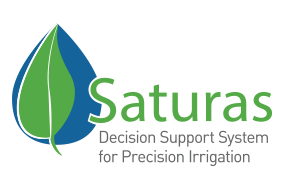
Kerlink & Saturas
Kerlink Solutions to Power the Rollout of World’s First Automated Stem-Water Measuring System
Abstract : “As the global population heads for more than 9 billion people by 2050, demand for food is expected to surge by more than 50 percent, putting unprecedented pressure on renewable, but finite water resources. As the world is rapidly becoming wealthier and more urbanized, food preferences are also changing and the increasing demand for high-value products, such as milk, meat, fruits and vegetables, with much higher water footprints, is increasing.”
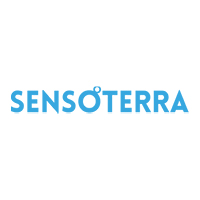
Kerlink & Sensoterra
Kerlink Low Power IoT Reference Design helps Sensoterra to cut R&D costs and to optimize antenna performances for its soil-moisture sensors
Abstract : “Within Smart Farming topics, soil moisture measurement is obviously quite a critical field in the precision agriculture domain. It is a key leverage for sustainable farming programs as it enables to precisely measure soil moisture and conditions. It also helps farmers to maintain in real-time a good soil health, to reduce water consumption and save this increasingly scarce resource and to increase yields even if only a few of agricultural land worldwide is so far equipped for soil-moisture measurement.”

Kerlink & Internet of Things America
Kerlink & Internet of Things America Enable IoT Networks For Agriculture and Towns across Rural U.S
Abstract : “Barcelona – Mobile World Congress – Feb. 25, 2019, 06:00 p.m. CET – Kerlink (ALKLK – FR0013156007), a specialist and global leader in solutions dedicated to the Internet of Things (IoT), and Internet of Things America (IoT America), a U.S. company dedicated to deploying IoT solutions across rural America, today announced they have teamed up to quickly and easily transform the way rural businesses work by maximizing the power, ease-of-use and security the Kerlink platform brings to these businesses through Kerlink stations and core-network software.”
Resources related to Smart Agriculture & Precision Agriculture
LoRa Alliance Whitepaper
The growing global population coupled with increased awareness of the demands agriculture places on the environment is putting farmers under intense pressure. They’re required to maximize yields to feed more people while simultaneously ensuring their practices are sustainable. In addition, consumers demand cheap food, necessitating greater automation to preserve margins.
There is a need to find a balance between intensive production and respect for nature and this cannot be achieved within the confines of traditional farming. Harnessing technology to enable smart agriculture has emerged to provide farmers with the tools they need to serve a 30% larger population in the future in a sustainable way that is in harmony with nature. Within smart agriculture, there are two main industries: crop production, which includes arable, orchard and vegetable farming, and animal husbandry. These have distinct requirements. This paper focuses on crop production exclusively.



